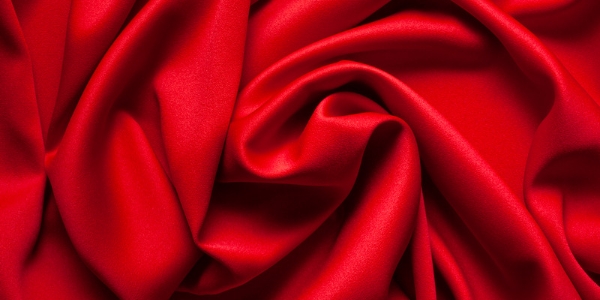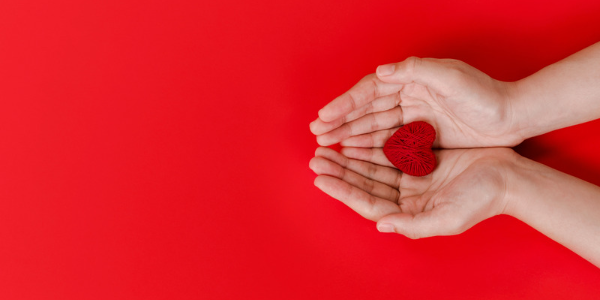Is red your favorite color? Well, believe it or not, you would actually be in the minority since according to research it is the world’s favorite color is generally blue. Still, red is an absolutely amazing color for many reasons. And, it’s certainly easy to notice it just about everywhere. So, it’s only natural to wonder what’s the spiritual meaning of red.
Red is a color that has captivated humans for centuries, with its vibrant hue and undeniable energy. In spiritual and religious traditions across the world, red holds great significance as a symbol of power, passion, and vitality. From the fiery flames of Hindu goddess Kali to the red robes of Catholic cardinals, this color has been used to evoke a range of emotions and meanings.
But the spiritual meaning of red goes beyond its cultural and historical associations. In many ancient healing practices, such as Ayurveda and Traditional Chinese Medicine, red is believed to stimulate the body’s vital energy and promote physical and emotional well-being. In meditation and visualization practices, red is often used to connect with the root chakra, which represents our most basic needs for survival and grounding.
Moreover, the psychological effects of red have been extensively studied, with researchers finding that it can increase heart rate, blood pressure, and even appetite. There have been many studies that find that people who wear red are more attractive to the opposite sex. (We’ll get more into this later in the article!)
But beyond its physiological effects, red can also have profound impacts on our mood, behavior, and cognition. In this article, we will explore the spiritual significance of the color red, examining its symbolism, associations, and lessons for our spiritual journey.
Table Of Contents
- Positive Attributes Of The Color Red
- Negative Attributes Of The Color Red
- The Color Red Uses In Spiritual Practices
- What Does It Mean To Wear Red?
- Red And Its Uses In Feng Shui
- Why Are Hearts Red? The Meaning Of Love And Red
- What Metaphysical Properties Do Red Gemstones Have?
- Spiritual Meaning Of The Color Red Summary
- What Does It Mean To Dream Of Something Red?

Positive Attributes Of The Color Red
Red is often associated with positive attributes such as vitality, passion, and courage. This bold and energetic color can inspire a sense of physical strength and resilience, making it a powerful symbol of vitality and life force. Red is also the color of desire, love, and romance, representing intense emotions and deep connections with others. Additionally, red can inspire confidence, bravery, and fearlessness, making it a popular choice for uniforms and logos. Overall, the positive attributes of red make it a powerful color for self-expression, creativity, and spiritual growth.
- Vitality
- Energy
- Love
- Passion
- Strength
- Confidence
- Bravery
- Power
- Creativity
- Grounding
- Protection
Negative Attributes Of The Color Red
While the color red is often associated with positive traits, it can also have negative connotations. For example, red can be associated with anger, aggression, and violence. This is due in part to the fact that red is a physically stimulating color that can increase heart rate and blood pressure, leading to feelings of tension and stress. In some cases, red may also be associated with danger, warning, or alarm, as seen in red stop signs, emergency signals, or warning labels. Furthermore, in some cultures, red may be considered taboo or inappropriate, especially for certain occasions or events. Ultimately, the negative attributes of red are often dependent on cultural and individual perspectives, and may be balanced by the positive attributes of this vibrant and dynamic color.
- Anger
- Tension
- Stress
- Violence
- Alarm
- Warning
- Intimidation
- Harshness
- Recklessness
- Hostility
- Overstimulation
The Color Red Uses In Spiritual Practices
Red holds a significant place in many spiritual practices and traditions across the world. In Hinduism, red is the color of the goddess Durga, who represents power, protection, and destruction. Devotees often offer red flowers and wear red garments during puja ceremonies, rituals, and festivals. Red is also associated with the first chakra, or Muladhara, which represents our sense of stability, grounding, and physical identity.
In Chinese culture, red is the color of good luck, prosperity, and celebration. Red envelopes are often given as gifts during the Chinese New Year, and red is considered an auspicious color for weddings and other festive occasions. In Chinese medicine, red is associated with the heart, which represents our emotional well-being, joy, and passion.
In Christianity, red is the color of the Holy Spirit and Pentecost, representing the fire of divine inspiration, creativity, and transformation. Red is also associated with the blood of Jesus and martyrdom, symbolizing sacrifice, redemption, and forgiveness. In many Christian churches, red vestments are worn on Pentecost Sunday and other special occasions, and red candles are used during Advent and other liturgical seasons.
In Native American traditions, red is the color of the east, representing the element of fire, the rising sun, and the spirit of new beginnings. Red is often used in healing ceremonies, rituals, and dances, and may be associated with specific animals or plants, such as the red-tailed hawk or the wild rose. Red may also symbolize the life force or energy that connects all living beings and the natural world.
In all these spiritual practices, the color red plays a vital role in connecting us to the divine, the natural world, and our own inner selves. Whether we see red as a symbol of vitality, passion, transformation, or protection, it reminds us of our deepest aspirations, fears, and desires, and encourages us to embrace the full spectrum of our human experience.

What Does It Mean To Wear Red?
Wearing red can have significant spiritual meanings, depending on the context and intention. In some cultures, red clothing may be worn as a sign of celebration, joy, or good fortune, as seen in traditional Chinese, Indian, or African dress. Red may also be worn as a symbol of power, authority, or courage, as seen in the red robes of Buddhist monks, or the red berets of military forces. In these cases, red represents a sense of confidence, strength, and vitality that inspires and uplifts the wearer.
From a spiritual perspective, wearing red may also be seen as a way to connect with the energy and symbolism of the color itself. Red is associated with the first chakra, or root chakra, which represents our sense of grounding, stability, and physical identity. Wearing red clothing or accessories may help us feel more connected to our bodies and our sense of purpose in the world. Red may also stimulate our creativity, passion, and drive, encouraging us to pursue our goals and desires with renewed energy and enthusiasm.
In some spiritual practices, wearing red may also have specific ritual or symbolic significance. For example, in Tibetan Buddhism, red robes are worn by advanced practitioners to represent their commitment to the path of enlightenment and their dedication to helping others. In Hinduism, red clothing may be worn during rituals or ceremonies honoring specific deities, such as the goddess Kali or Lord Hanuman.
Overall, wearing red from a spiritual perspective can be a powerful way to connect with our inner selves, express our identity and aspirations, and align ourselves with the energies of the universe. And, to appear powerful and passionate! Whether we wear red for personal or spiritual reasons, it inspires us to live life to the fullest.
Red And Its Uses In Feng Shui
Feng shui, a Chinese system of geomancy and aesthetics, places great emphasis on the use of color to create harmony and balance in our living spaces. In feng shui, red is considered a powerful and auspicious color that can bring good luck, prosperity, and happiness into our lives. Red is associated with the fire element and the south direction, which represent passion, creativity, and social connections.
One of the most popular ways to use red in feng shui is through the placement of red objects, such as artwork, pillows, or curtains, in strategic locations throughout the home. Red is believed to activate the “chi” or life force energy in our surroundings, promoting vitality, joy, and abundance. In particular, red is often used in the wealth area, or southeast corner of the home, to attract financial prosperity and abundance.
Another way to incorporate red into feng shui design is through the use of red gemstones and crystals, such as garnet, ruby, or red jasper. These stones are believed to enhance our physical energy, passion, and vitality, as well as protect us from negative influences and enhance our creativity. We’ll cover more red gemstones later in the article.
However, it’s important to note that the use of red in feng shui should be balanced with other colors and elements to avoid overstimulation or imbalance. Red may not be suitable for every individual or every space, and its effects may vary depending on cultural and personal associations with the color. As with all feng shui practices, it’s important to consult with a trained practitioner and use your own intuition and sensitivity to create a harmonious and balanced living environment.
Why Are Hearts Red? The Meaning of Love and Red
The heart is universally recognized as a symbol of love, passion, and affection, and is often depicted as a bright red, stylized shape. But why is red so strongly associated with matters of the heart? The answer lies in the physical and emotional effects that the color red has on us as humans.
From a physical perspective, red is associated with the heart and circulatory system, as well as with physical sensations of warmth, passion, and intensity. Red is known to stimulate the production of adrenaline and increase heart rate, which may explain why we associate it with strong emotions such as love, excitement, and desire.
From an emotional perspective, red has been associated with love and passion for centuries, dating back to ancient cultures such as the Greeks and Romans. In these cultures, red was linked to the goddesses of love and beauty, such as Aphrodite and Venus, and was seen as a symbol of fertility, sensuality, and desire.
In more recent times, the association between the color red and love has been reinforced by popular culture, such as in the red hearts used to symbolize love and affection on Valentine’s Day. The use of red in weddings, such as in red roses, bridesmaids dresses, or decorations, is also a common way to signify love and romance.
Overall, the association between the color red and matters of the heart is a powerful and enduring one, reflecting the deep connection between our physical and emotional experiences of love and passion. Whether we wear red clothing, decorate our homes with red accents, or give red roses to our loved ones, the color red will continue to evoke strong feelings of love, warmth, and affection for many years to come.

What Metaphysical Properties Do Red Gemstones Have?
Red gemstones have long been prized for their beauty and rarity, as well as their metaphysical properties. These stones are believed to have healing and protective energies, and can be used in various spiritual practices to enhance our physical, emotional, and spiritual well-being.
One of the most well-known red gemstones is the ruby, which is prized for its rich red color and its association with passion, courage, and vitality. Ruby is believed to stimulate the root chakra, which governs our sense of security and connection to the earth, as well as the heart chakra, which governs our ability to give and receive love. Ruby is also said to protect against negative energy and promote spiritual growth and wisdom.
Another popular red gemstone is garnet, which is believed to have strong grounding and protective energies. Garnet is associated with the root and sacral chakras, and is said to enhance our physical energy, passion, and creativity. Garnet is also believed to protect against negative energy and promote emotional healing and balance.
Red jasper is another red gemstone with powerful metaphysical properties. This stone is associated with the root chakra and is said to enhance our physical energy, courage, and strength. Red jasper is also believed to promote grounding and balance, and to protect against negative energy and environmental toxins.
Other red gemstones with metaphysical properties include carnelian, red agate, and red tourmaline, each with their own unique attributes and associations.
Overall, red gemstones have a long and rich history in spiritual practices and healing traditions. Whether used for their beauty, rarity, or metaphysical properties, these stones offer a powerful and profound connection to the earth, to ourselves, and to the divine energies that surround us.
Spiritual Meaning Of The Color Red Summary
- Vitality: Red is often associated with energy, life force, and physical strength, making it a powerful symbol of vitality and resilience.
- Passion: Red is the color of desire, love, and romance, representing intense emotions and deep connections with others.
- Courage: Red is a bold, assertive color that can inspire confidence, bravery, and fearlessness, making it a popular choice for uniforms and logos.
- Grounding: Red is also connected to the root chakra, which represents our sense of security, stability, and connection to the earth.
- Creativity: Red is associated with the element of fire, which represents transformation, purification, and creativity, making it a powerful color for artistic expression and inspiration.
- Power: Red is often used to signify authority, dominance, and control, as seen in the red robes of cardinals and the red flags of political movements.
- Protection: In some cultures, red is used as a talisman or amulet to ward off evil spirits, negativity, or harm.
- Spiritual growth: Red can also represent the process of spiritual awakening, transformation, and rebirth, as seen in the imagery of the Phoenix rising from the ashes.
- Warmth: Red not only has a metaphorical connection to warmth and passion but it also has an association with summer, fire, and heat.
What Does It Mean To Dream of Something Red?
Dreaming of the color red can hold various meanings, depending on the context and details of the dream. In general, the color red is associated with passion, energy, and intensity, as well as with warning signs and danger. So, it is vitally important that you listen to your own intuition and how you felt during the dream above all else.
If you dream of seeing something red, it may represent strong emotions, such as love, anger, or excitement. It may also signify a sense of urgency or importance, urging you to take action or make a decision. Alternatively, dreaming of something red may represent warning signs or danger, such as a red stop sign or a red traffic light, indicating that you need to slow down or be cautious in some area of your life.
If you dream of wearing or using something red, it may indicate a desire for passion or excitement in your life. It may also represent a need for courage or confidence, as red is often associated with strength and vitality. Alternatively, dreaming of something red may indicate a need to take action or make a bold move in some area of your life.
If you dream of bleeding or seeing blood, which is often associated with the color red, it may represent emotional pain or turmoil, as well as physical illness or injury. It may also represent a need to let go of negative emotions or past hurts, in order to move forward and heal.

